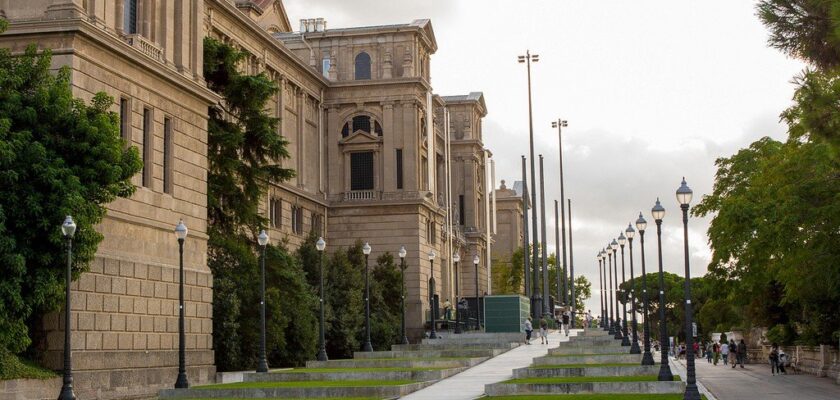Montjuïc
Mount Montjuïc is part of the Collserola mountain range, a spur of the Catalan Coastal Range in southeastern Spain. The height of Montjuïc is 177.7 meters. This famous elevation dominates the port of Barcelona. Around the mountain is one of the 10 administrative districts of the city – Sants Monjuïc. Here are planned landscape parks, ornamental gardens, numerous historical and architectural monuments, museums, art galleries, theaters, outstanding sports facilities. Today, Montjuïc is the center of Barcelona’s attractions.
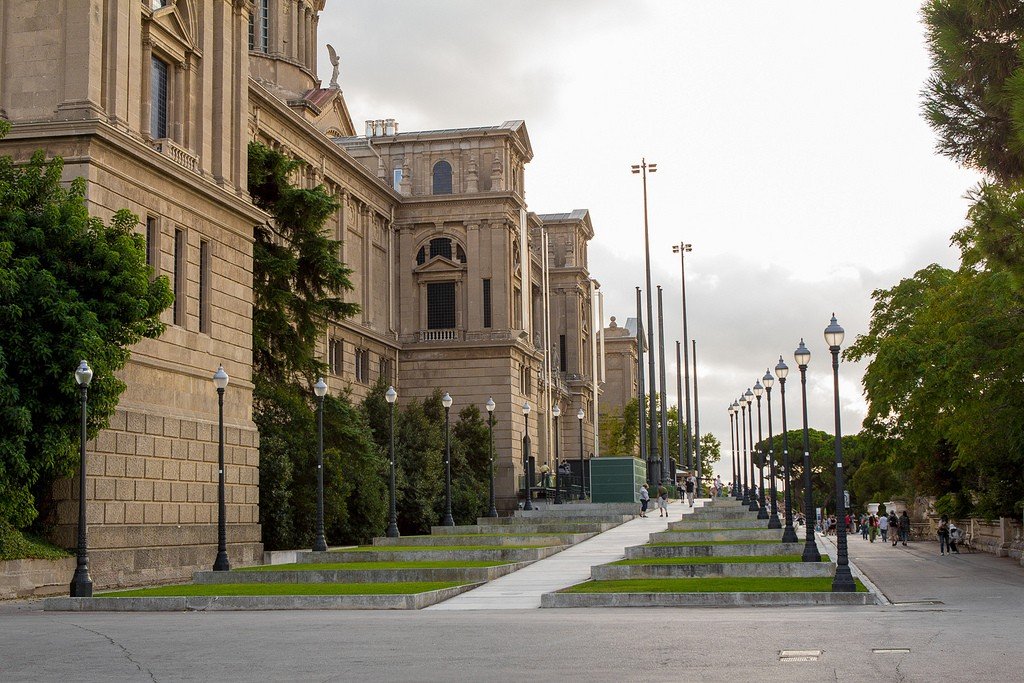
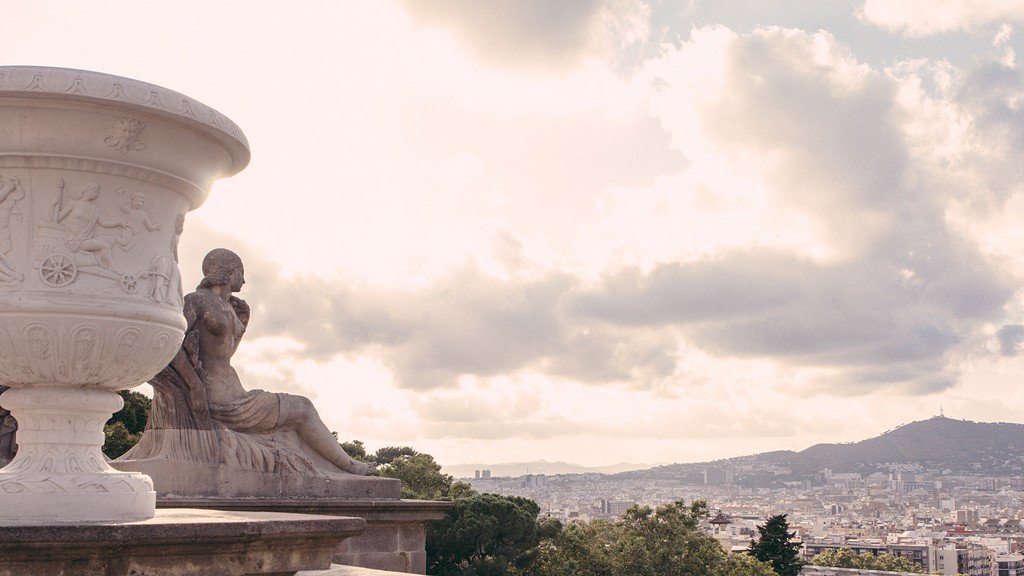
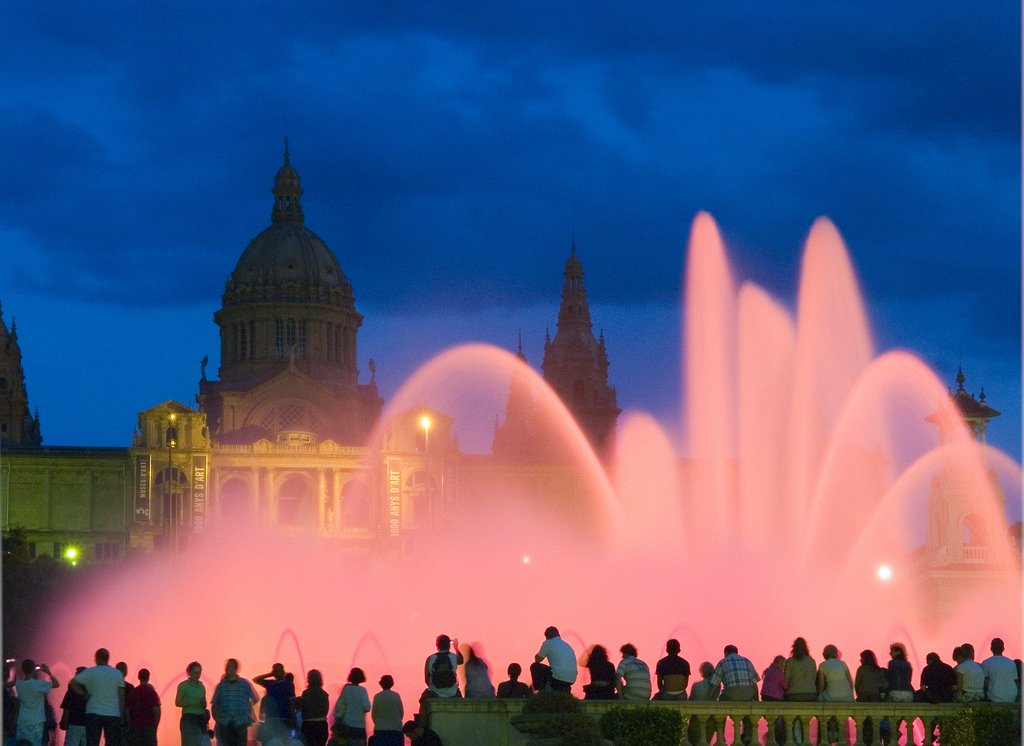
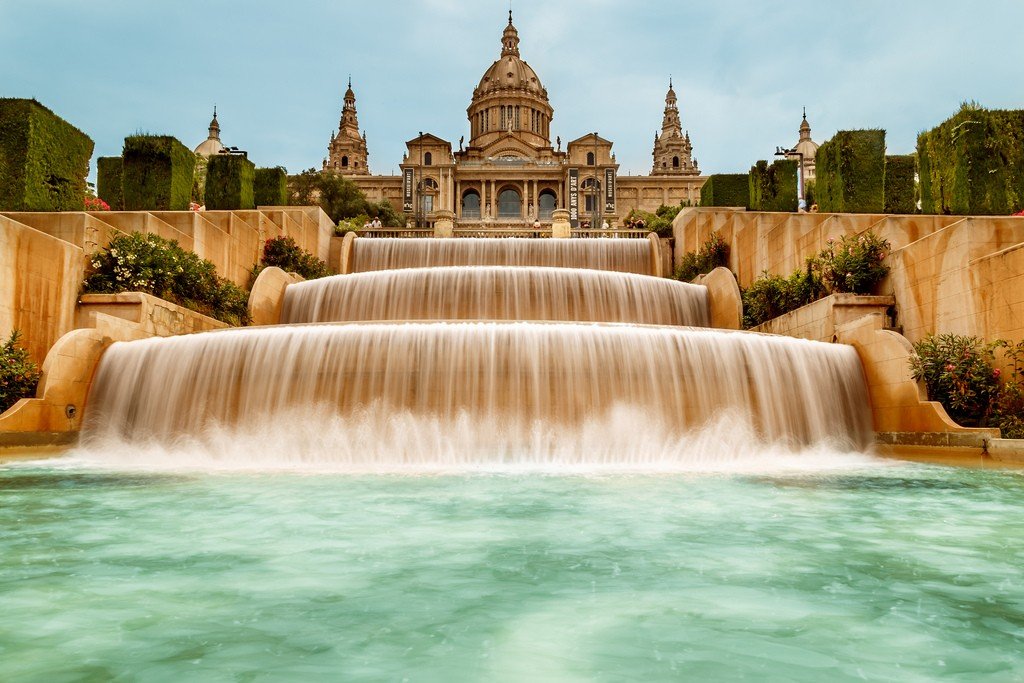
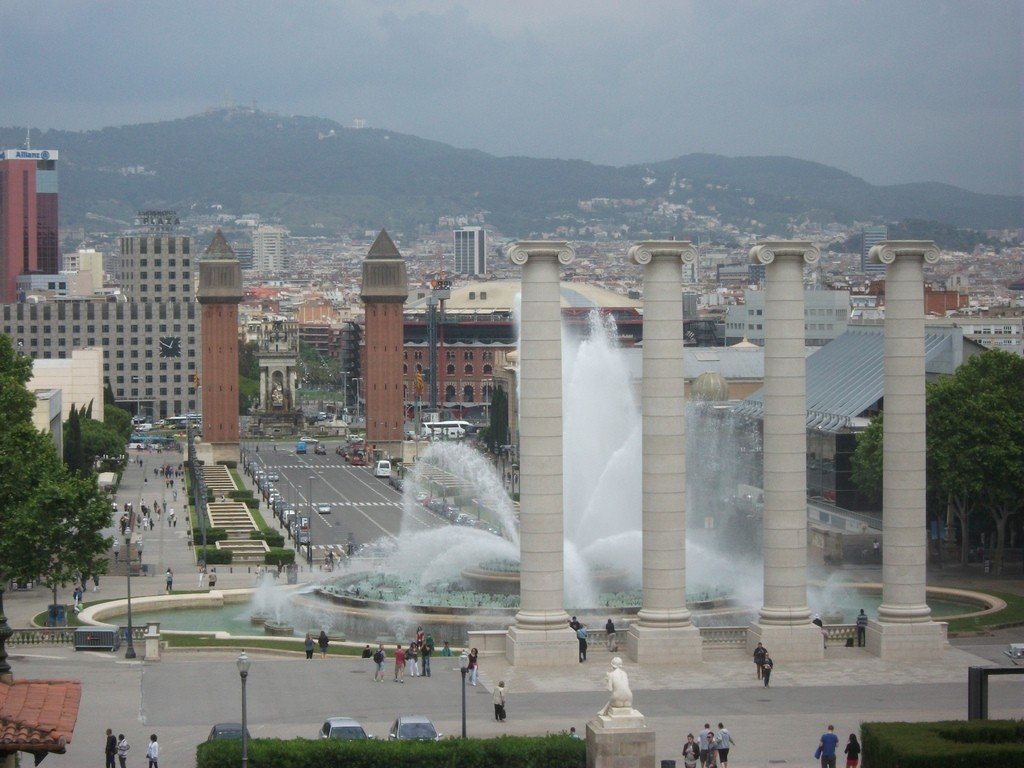
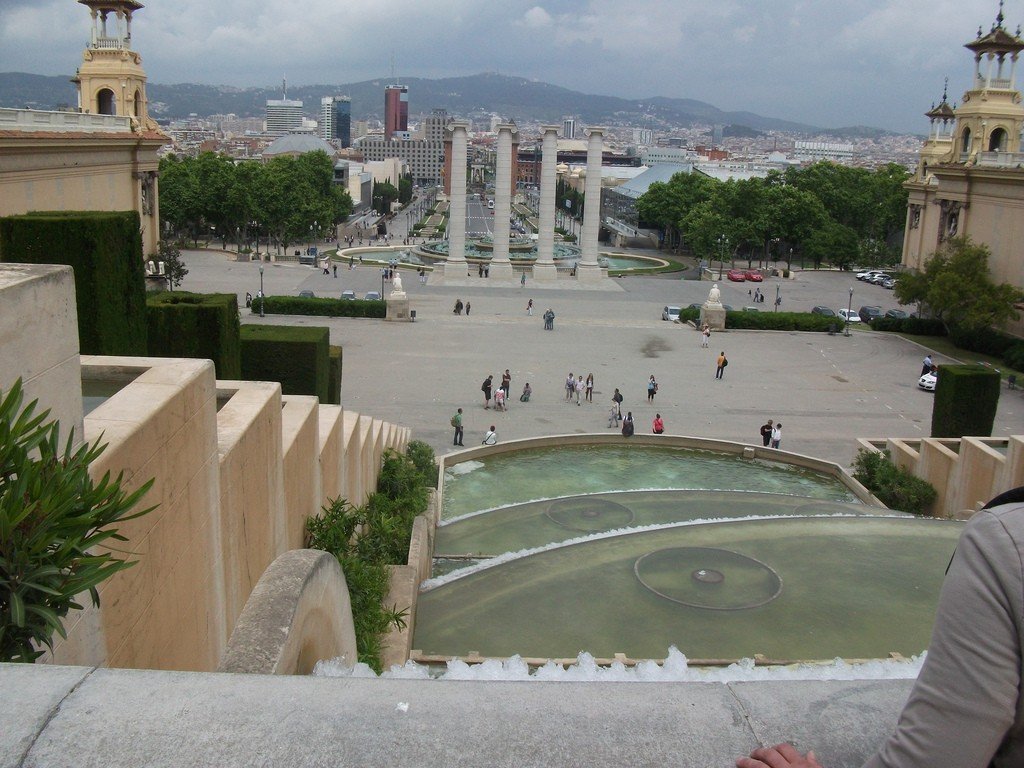
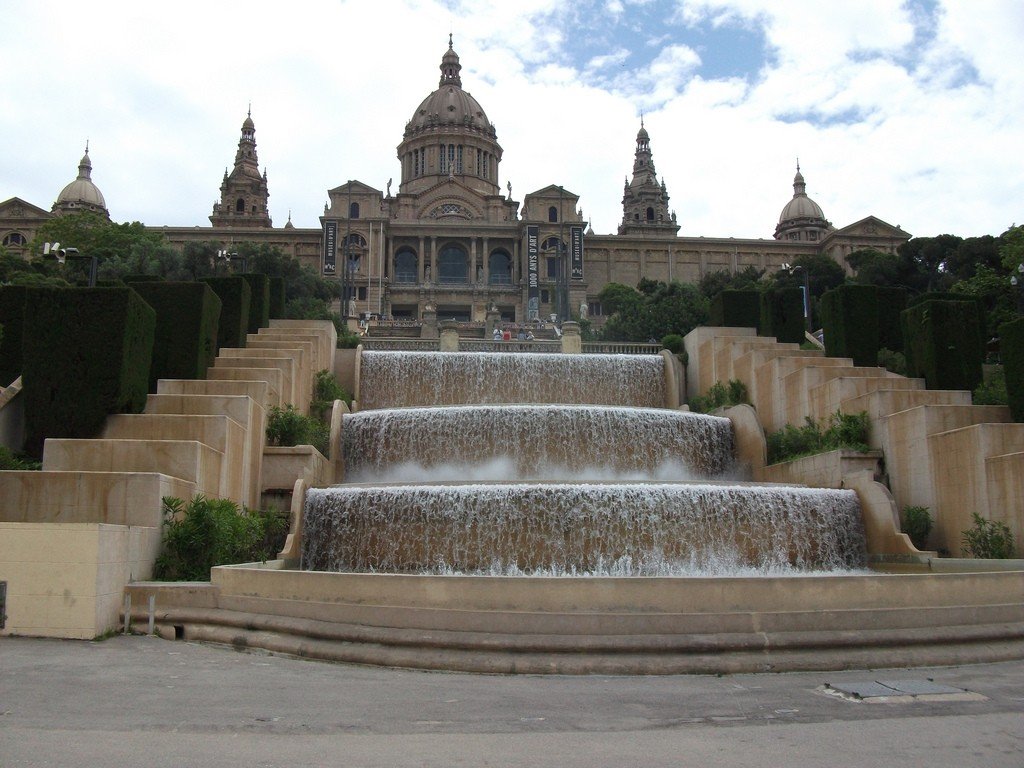
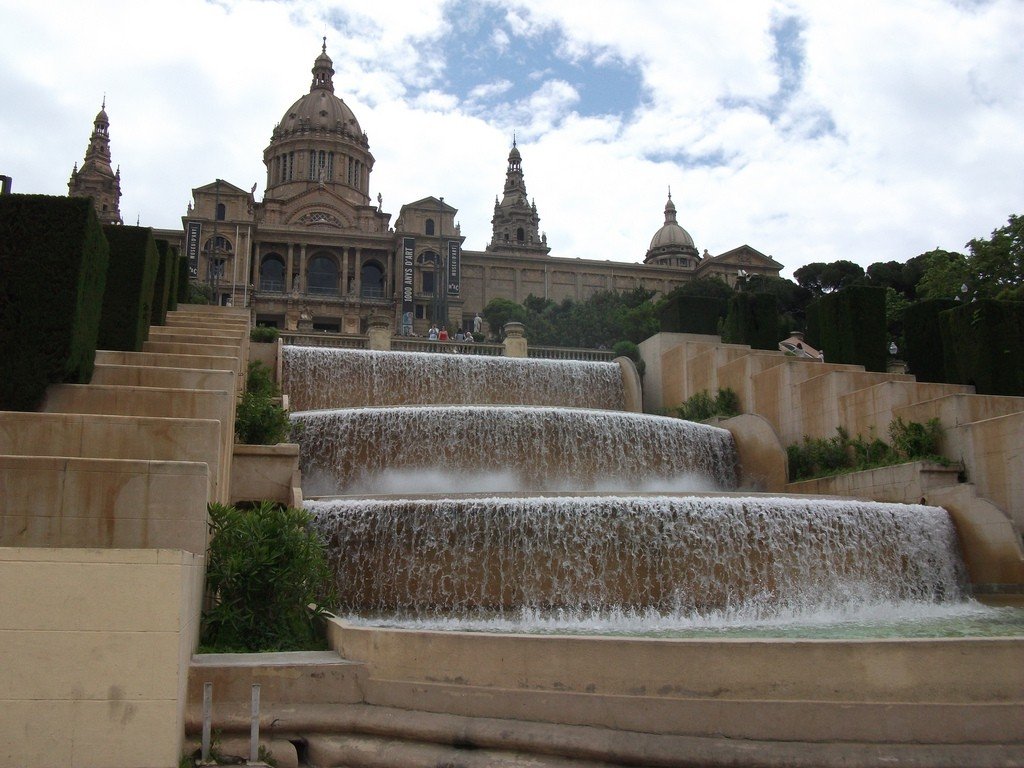
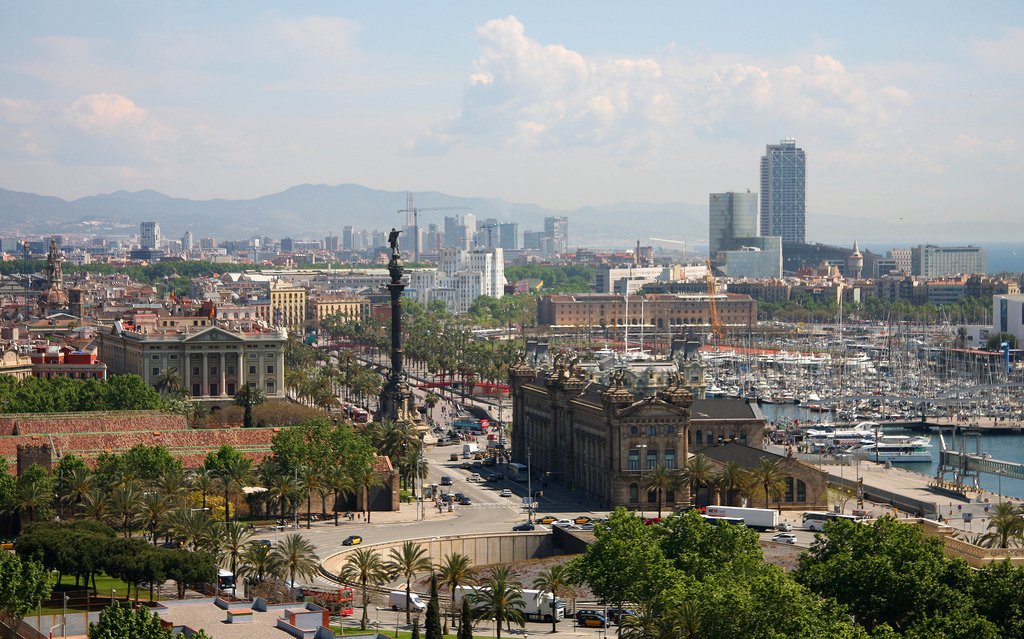
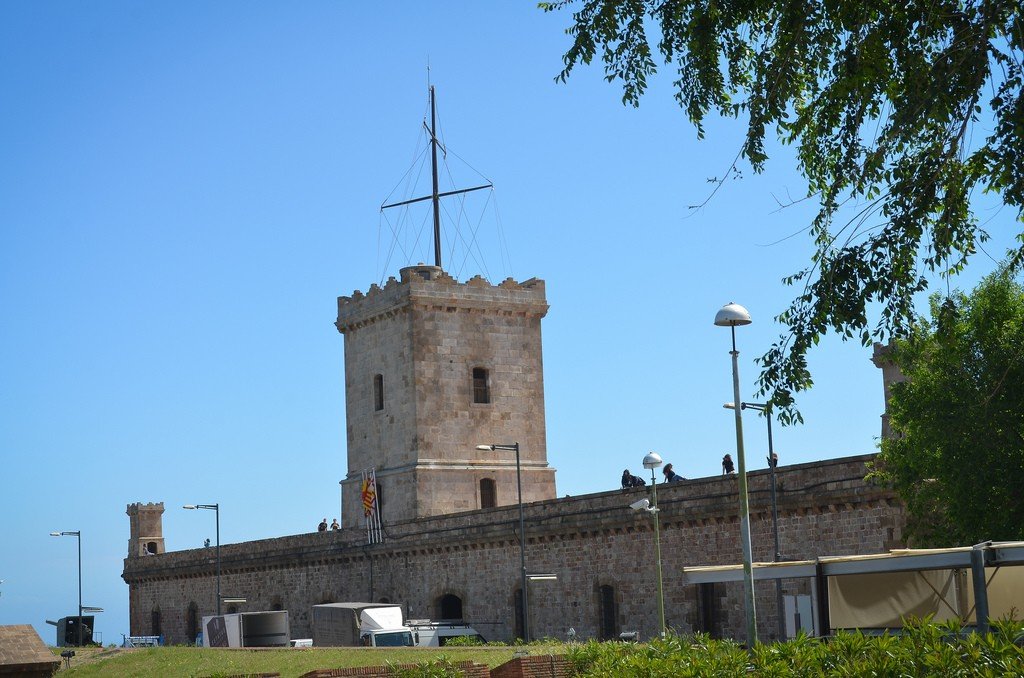
History
Spanish archaeologists have discovered that the hilltop of Montjuïc, overlooking a bay convenient for ships, was the site of Celtic settlements in ancient times. Here stood a lighthouse, which also served as a watchtower.
The Romans who conquered this land erected a temple of Jupiter on the top, which gave the hill its name – Montjuïc. This is how its Latin name, Mons Iovis (Jupiter’s Mountain), sounds in Catalan. One of the first written references to Mount Montjuïc can be found in the work of the Roman geographer Pomponius Mela, written in 43 AD.
.
Another version of the origin of the name came later, in the Middle Ages. On the slopes of the mountain in those days there was a large Jewish cemetery, which is confirmed by archaeological data. The word “Montjuïc” in the Catalan language is consonant with the concept of “Jewish Mountain.”
For several thousand years, since the time of the ancient Iberians and Romans, Mount Montjuïc has served as a quarry for extracting the durable pinkish quartzite sandstone that lines the facades of most of Barcelona’s ancient buildings. Back in the 19th century, there were caves on the slopes of Montjuïc with traces of Neolithic tribes, but they were swallowed up by the quarries. Stone mining here was stopped only in 1957. Vertical slices of rocks are still visible today on the northern and western slopes of the mountain. Today excursions to them are organized. Here you can clearly see the patterned prints of algae, fossilized shells of marine mollusks that lived in the past geological epochs, when Montjuïc was just forming on the bottom of the prehistoric ocean.
.The interior of the mountain is rich in quartz veins containing ornamental and semi-precious stones. Finds made during the construction of underground utilities and building foundations attest to the existence of Bronze Age Iberian settlements on the slopes of Montjuïc. In the local souvenir shops collectors will find a selection of minerals collected from the scree in the old quarries – beautiful crystals of transparent quartz and blue amethyst, druzes of jasper and agate, semi-precious opals and chalcedony.
.On Via Magoria, which winds down the slope of Mount Montjuïc, a Phoenician settlement from the 7th century B.C. was discovered in 1984 with samples of characteristic pottery. In the area of the ancient necropolis, traces of the ancient Greeks have been found. Beautiful Attic vases and other finds from these excavations can be viewed at the Archaeological Museum. On the slopes of Mount Montjuïc, in the area of the castle and the port, several silos – huge ceramic vessels used to store grain, olive oil and other products – have been discovered. The volumes of the silos ranged from 20 to 80 thousand liters. These capacious storages testify to the lively maritime trade of the ancient era.
.
For centuries, the wooded mountain towered over Barcelona, and the city’s neighborhoods gradually climbed its slopes higher and higher, approaching the castle at the top. The face of Mount Montjuïc changed radically in the 20th century, its landscape and development influenced by two significant events – the World Expo held in Barcelona in 1938 and the 1992 Olympic Games.
.For Expo 1938, dozens of exhibition pavilions and other structures were erected on Mount Montjuïc, including a funicular, restaurants, viewpoints, fountains, and sculptures. The exhibition complex occupied 160 hectares. Landscape designers turned this territory into a beautiful park zone, and for Spanish architects the World Exhibition became a platform for demonstrating new architectural styles that replaced modernism. During that period, most of the large buildings for museums and art galleries that are admired by tourists today were built in the parks and streets of the Sants Monjuïc neighborhood.
.
The second wave of reconstruction began before the 1992 Olympics, hosted by Barcelona. Many sports facilities were opened on Mount Montjuïc, and the Olympic torch lighting and closing ceremonies were held here.
.
Sights of Montjuïc
The architectural dominant feature of Montjuïc Hill is the castle that bears the mountain’s name. This mighty stronghold was built in 1640 and significantly expanded in 1751. For several centuries the fortress served as a political prison and gained a gloomy fame as a place of terrible tortures and executions. Only in the 60s of the last century, General Franco ordered to transfer the castle to the civil authorities of Barcelona, but with the condition of organizing a military museum in its premises. The dictator’s order was fulfilled. Now the Military History Museum is located here, where an extensive collection of weapons is exhibited, as well as an untold army of tin soldiers in the uniform of all times and peoples. The inner courtyards of the castle are decorated with lawns and boxwood bushes, the walls and towers are overgrown with evergreen ivy. They resemble sets for fairy tale productions and serve as an excellent background for historical films.
.
A magical fountain with rhythmic illumination was built in the park for the opening of Expo-1938. But half a century later, for the 1992 Olympics, it was transformed into a whole cascade of fountains descending to the two towers in the Plaza de España, and the dance of 3620 jets was complemented by musical accompaniment. The grandiose fountains have become one of Barcelona’s symbols, a mesmerizing spectacle that attracts 2.5 million tourists each year.
.
From April 30 to September 30, Thursday through Sunday, the light and music show starts at 21:00 and lasts for two hours. Spectators arrive early, taking seats at the café tables surrounding the fountains. Latecomers crowd the viewpoints and the steps of the stone staircases. After the end of the tourist season, the show is not organized every day, you can specify the days of fountain operation on the spot.
.The upper fountain has four columns with Ionic capitals, which are the symbol of autonomous Catalonia. They signify the four stripes on the banner of the ancient kings of Aragon and the counts of Barcelona. These iconic columns, reminding Catalans of their lost independence, annoyed the central government in Madrid, and in 1928 they were demolished by order of military dictator General Miguel Primo de Rivera. In 2010, the symbolic columns were restored by decision of the Catalan Autonomy government.
>Nearby is the Spanish Village. This open-air museum features life-sized replicas of famous historical buildings from different cities and regions of Spain. Surrounded by fortress walls, 117 buildings have been erected on an area of 49,000 m². It has its own streets and squares where fairs and carnivals are held. The town is full of stores and restaurants, a theater and nightclubs, as well as artisan workshops producing a variety of souvenirs. Art galleries exhibit private art collections, including little-known drawings by Salvador Dali, Picasso and other famous artists.
.Many view terraces are arranged on the slopes of Mount Montjuïc, the most popular viewpoint being the Mirador del Alcalde. Here, spyglasses are set up for curious tourists to view the port and Barcelona’s colorful buildings.
Modern sights of the mountain include the 136-meter high Montjuïc TV tower, also known as La Torre Telefónica. This futuristic silver stainless steel structure was built for the 1992 Olympic Games to provide television coverage of the competition. The fantastic contour of the graceful TV tower seems to defy the gravity of the planet and resembles a curved joystick controlling a spaceship. The tower also serves as a giant sundial. Its concrete base is decorated with a typical Catalan mosaic made of fragments of watered pottery and pieces of colored glass.
.
The strikingly flexible plastic silhouette of the Montjuïc TV tower’s silhouette was borrowed by designers to create a figurine of the prestigious prize awarded annually to winning drivers at Spain’s Formula 1 race track.
.The architectural legacy of the Olympics on Mount Montjuïc includes the Luis Companis Stadium, swimming pools, running tracks with grandstands, and volleyball courts. The Palace of Sports, built at the foot of the mountain, has been turned into the Barcelona Musical Theater.
.
In one of the stone quarries on the slope of Mount Montjuïc, an outdoor amphitheater reminiscent of the theaters of ancient Greece has been erected. Its stone benches seat 2,000 spectators. During the tourist season, the Greek Festival is held here, which occupies a prominent place in the calendar of annual European cultural events. From June to August, artists from different countries perform on this stage, organizing music and dance shows and folklore performances. The theater is surrounded by terraces with gardens of orange trees, vines, jasmine bushes, roses and aromatic herbs. The gardens feature fountains, water lily ponds, walkways, staircases and gazebos. In summer, there is an outdoor restaurant.
.Parks and museums
On the northwestern slopes of Mount Montjuïc is the Botanical Garden of Barcelona, spread over 14 hectares. The garden features mainly Mediterranean flora. Alleys with signs lead tourists to plants brought from Australia, South Africa and America. A separate sector represents the flora of the Canary Islands.
.Avenida del Estadia Street leads to another botanical garden known as the Historic Garden. It is located in the former quarries. Here you can view endemic plants from all over the world and see the tallest trees that grow in Barcelona.
.
The park is surrounded by the most beautiful building on Mount Montjuïc, the National Palace, which closes the perspective of Plaza de España. The palace, built in the Baroque style, is crowned by tall elliptical domes and towers, with wide staircases with waterfalls and fountains leading to the entrance. The National Art Museum of Catalonia is located here. It is known for one of the best in Europe collection of works of Romanesque art XI-XIII centuries, a significant collection of paintings by Renaissance artists. The museum has a famous Numismatic Cabinet, which contains 134,000 coins, from the world’s first coins minted in the ancient cities of Asia Minor in the 6th century B.C. The palace has a spacious hall for ceremonial events with one of the largest organs in Spain.
.For connoisseurs of contemporary art, we recommend visiting the exposition of the Miró Foundation on Avenida Miramar. The museum was created in 1975 by the family of Catalan abstractionist painter and sculptor Joan Miró. About 200 paintings of the master, as well as dozens of canvases of other artists of the XX century, sculptures, graphic drawings are presented here. On the first floor there is an exhibition of works by young contemporary painters. The panoramic veranda overlooks the Parc de Montjuïc and the center of Barcelona at the foot of the mountain. The museum is open Tuesday-Saturday from 11:00 to 19:00, Sunday and holidays from 10:30 to 14:30. The gallery is not open on Mondays.
.The Archaeological Museum of Catalonia is located near the Parc de Montjuïc cable car stop. It has a rich collection of artifacts, the exposition tells the history of Catalonia from the time of the first stands of Paleolithic tribes to the events of World War II. The museum is open from Tuesday to Saturday. Opening hours are 09:30-19:00, and 10:00-14:30 on Sunday. The cost of admission ticket is 4,50 €.
For the exposition of the Ethnological Museum in the park on Paseo de Santa Madrona, 16, erected a separate building. Here are collected household items, national costumes, jewelry of different peoples living in the most remote corners of the planet. They are brought from expeditions of Spanish travelers for many centuries. In the showcases are masks and weapons of African tribal warriors, craftsmen of pre-Columbian America, outfits and ritual objects of the inhabitants of the islands of Oceania, ancient Japanese ceramics. Copies of rock paintings of primitive peoples of North Africa, equipment of Tuaregs inhabiting Morocco, and much more are presented.
.Restaurants
The panoramic windows and outdoor terraces of the upmarket restaurants on Montjuïc Mountain offer marvelous views of Barcelona. The city is especially beautiful in the evenings, when the buildings are illuminated with multicolored lights. Tables by the windows for the evening are booked a week in advance. Here they are called “front row tables”. All panoramic restaurants belong to the highest price category, many of them open in the afternoon, from 13:00, and are open late.
.
In our brief review, we will name only three panoramic restaurants located at the very top of the mountain, which have gathered a lot of positive feedback from tourists.
.Miramar Restaurant Garden & Club (40 Avenida Miramar Street) is popular, it is located near the hotel of the same name. It is one of the few establishments that open in the morning, from 10:00. At this time there are few visitors, you can take a table by the window and have a delicious breakfast while looking at the city.
.
Nearby is El Xalet de Montjuïc, a Michelin-starred restaurant, which is awarded for its excellent cuisine and high level of service. The owner of the establishment creatively solved the problem with the limited number of seats near the windows. The floor in the central hall slowly rotates, and during the hour each table for a few minutes is at the panoramic window.
.
It is relatively inexpensive to dine and admire the city on the terrace of the Terraza Martínez restaurant. It serves Catalan cuisine.
.
How to get there
You can start your journey to Mount Montjuïc from Plaza de España, which adorns the center of Barcelona. Here there is a station of the Barcelona Metro, which can be reached by trains of the L2 and L3 lines. The square features two 47-meter high columns reminiscent of the bell tower of San Marco in Venice. From here, stone staircases wind their way up the mountain slopes. Parallel to them are escalators that take tourists to the Expo 1929 exhibition pavilions, to the Magic Fountains, and on to the National Palace.
.
City buses #13, 23, 55, 107, 125 and 150 run from different parts of Barcelona to Mount Montjuïc.
.There are stops for the brightly colored Bus Montjuïc Turístic buses in the center of Barcelona, in the square in front of the railway station and the passenger seaport terminal. These go to the top of Mount Montjuïc on a sightseeing route that passes by the main sights, the trip is accompanied by a guide’s explanations.
.
To the castle of Montjuïc on top of the mountain, tourists are tirelessly taken by an ancient funicular on a 758-meter-long railroad track. Its opening was timed to coincide with the 1929 World Exhibition in Barcelona. The lower station “Parallel” is built a stone’s throw away from the metro stop “Plaça Espanya”. The funicular carriages, with a capacity of 400 passengers, stop at the intermediate station “Parc de Montjuïc”. Here you can get off for a walk and then continue on another elevator, providing a different perspective of the city.
.From Parque de Montjuïc to the castle, a cable car with 55 enclosed cabins with 8 seats runs over the eastern slope of the mountain and is 752 meters long. During the 8-minute aerial journey you will see the center of Barcelona, cruise ships in the port and the azure Mediterranean Sea. The intermediate station is at the Mirador del Alcalde viewpoint. Round-trip tickets cost €12.70 for adults and €9.20 for children 4-12 years old. Younger children go free of charge. It is possible to pay only for the climb (8,40 € and 6,60 € respectively), and go down into the city on foot, by cable car or by bus.
.Since 1931, there has been a 1,303-meter-long aerial cable car running from the port of Barcelona to the top of Mount Montjuïc. The lower station is located at the top of a 102-meter openwork metal tower, where passengers are taken up by elevator. The capacity of this suspended railway is small, only 150 passengers per hour, so tourists crowd the crowded queue. But the views from the ancient octagonal cabins are amazing, and you will not regret the time spent waiting for a ride on the vintage “cable car”. At a hundred meters high, the carriages move leisurely over the port, beaches, downtown Barcelona and the landscaped parks that line the mountainside.
.